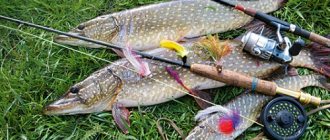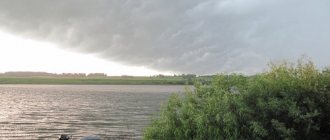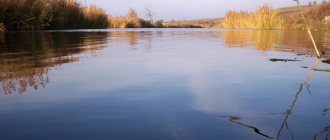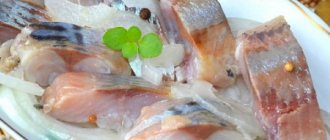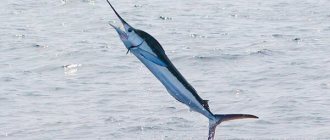Are the fish feeding today?
Is it caught by other anglers? If you don’t have the opportunity to see with your own eyes how other fishermen are succeeding in fishing, then all that remains is to pay attention to the following factors:
- Perhaps the fish are now spawning (in the spring after the ice melts) after some warming of the water. All fish have different spawning times. And many of them leave the places where they feed almost all year round and go to smaller places (channels, backwaters of islands, river mouths (places where a river flows into a larger body of water). During spawning, the behavior of the fish is unpredictable and one cannot expect a stable bite has to.
- Bad weather (rain, strong wind, temperature change) also affects the fish bite in a negative way.
Use different baits, baits, lures
If a fish doesn’t bite a worm, it doesn’t mean it’s not there. She may not be interested in your bait at the moment.
For animal baits, try:
- bloodworm;
- worm;
- maggot;
- fly pupae;
- Zhukov;
- live bait fish when fishing for large predatory fish.
From plant attachments:
- grains of corn, peas, pearl barley;
- dough.
In summer, fish prefer plant baits, and in spring animals. But don’t forget to try both types of baits when it doesn’t bite; there are exceptions to any rule.
If it doesn't bite...
Photo by the author
The more the water bodies warm up at the beginning of the summer season, the more various small living creatures appear in them, and the vegetation also intensively develops. For this reason, summer habitat conditions develop almost everywhere for fish, and a seasonal period of excess and variety of food begins in its life. Now the fish can choose to eat either young “greens” or various larvae, as well as new generation fry that have appeared in huge numbers.
The abundance of natural food in the water causes fishermen a lot of problems - fish are present in the reservoir, they show themselves in splashes, but they hardly bite on fishing gear either during the day or at night. And the whole point is that the usual assortment of attachments and baits that the fisherman usually carries with him is not at all satisfactory to the fish at the moment. If there is a massive emergence of dragonfly or caddisfly larvae in the water, will the underwater inhabitants begin to pay attention to the worm, bloodworm, maggot or steamed barley grains? In addition, fishermen cause additional “disgust” in the fish by throwing too much bait, the basis of which is plant components, where it eats exclusively some local living creatures.
But in any situation, you can find a completely acceptable way out and get a sufficient number of bites while fishing, although it is hardly possible to count on a record catch when there is an abundance of food for the fish. In this case, fishing usually turns out to be “labor”, which requires a lot of patience and perseverance from the fisherman, as well as methodical work with tackle, with the technique of presenting bait, with the quantity and composition of bait (or withholding it altogether), with the selection of the most suitable bait or its imitation.
For example, when a mass emergence of mayflies begins on the Oka River, various fish are caught only on its larva, which is very difficult to get, but also bites well on the wire if you place two inedible beads on the hook - yellow and white or black and red. It is also quite possible to induce a bite by minimizing the size of the bait: a well-fed fish may not take a whole pearl barley grain at all, but will not miss a small piece of it, for which you will need to use a hook of the appropriate size.
When a mosquito comes out, different fish should bite well on bloodworms, but in practice it often happens that this bait usually takes only small things if you fish with bloodworms according to the usual pattern. However, the size of the trophies changes dramatically in the direction of their increase if, instead of a bunch or brush of several bloodworms, you bait a single larva onto a high-quality hook and replace it with a fresh one more often. Apparently, when bloodworms emerge densely from the bottom sediments to transform into mosquitoes, the fish actively eats the larvae, is satiated with them, and therefore reacts only to small portions of food.
A similar situation is observed during short periods of mass emergence of any type of dragonfly - then it is possible to catch a large fish only using its larva, washing the bait from soft bottom sediments using a special mesh scoop with a rigid frame, or simply collecting larvae crawling out into the wild. At the same time, there is such a peculiarity: there is little point in fishing with this bait using standard bait - it is better to fish without it at all, looking for fish in places where food is concentrated and throwing a larva to it on the hook of a float rod.
By the way, fishermen who know a lot about catching worthy trophies with a dragonfly larva, from time to time arrange debates about the correct placement of it on the hook - whether to insert the hook tip into the thoracic region of the larva, or pierce through the abdomen. Practical experience shows that in the first option the bait only holds tighter and is less likely to be torn off by small things, but with the second method the larva remains alive for a long time, even swims, which additionally provokes a well-fed and cautious large fish to bite. And the “victims” of the largest larva, the so-called cuttlefish, belonging to the rocker dragonfly, can become not only the usual “white” fish, but also various “noticeable” predators - asp, chub, perch, pike perch, pike and even catfish.
Therefore, fishing tackle with this bait during the period of a good bite on it must be prepared stronger, without particularly fussing with either the thickness of the fishing line or the size of the hook. More than once I had to observe the following picture: at a time of general satiety in the fishing community, an angler sitting on the shore with the “correct” finest tackle and using excellent balanced bait catches even small things poorly. But another angler with rough tackle, fishing in a free search with a dragonfly larva or other seasonal bait, has several enviable trophies in his cage. This is how much a successfully found and sufficiently prepared bait means at a certain time in the life of reservoirs...
So, whether an angler fishes with bait or without it at all, focusing only on natural concentrations of some kind of fish, much will depend on how successfully found bait is presented to a well-fed object of fishing in order to provoke it into a sure bite. As a rule, you should imitate the behavior of the bait in accordance with how it gets to the fish. If, for example, fishing is carried out on the “greens” below the riffle, then fishing at a certain horizon above the bottom will be most effective, and in still water the fish will willingly take the same bait only near aquatic vegetation, and if it is on the hook quite close to the surface - Apparently, here, with good lighting, the “greens” always grow faster and produce a lot of fresh plant matter, and the fish get used to eating it here.
And the general rule in fishing techniques during periods of abundance of food is this: the slower the bait moves in the water column, depicting the ease of its grasp in front of the fish, the greater the chances of achieving a confident bite. This is precisely what specific technical techniques for fishing in still water and currents are based on.
Thus, in reservoirs with insignificant flow and low fish activity, the best effect is achieved by the so-called diving retrieve. To do this, install the float equipment that is as light as possible for fishing conditions, in which the load is evenly distributed along the length of the descent or is shifted closer to the float, which, after casting, ensures a time-consuming drop of the nozzle to the level at which the fish feeds. In this way, she notices the food in advance and prepares to capture it. This method of fishing with the selection of the sinking speed is technically close to fly fishing with a slowly sinking line.
In conditions of a noticeable current, on the contrary, it is necessary to use the most controllable equipment, the passage of which can be effectively slowed down, slowing down the speed and causing vertical movements, “game”, of bait in the bottom layer or at a certain level. This can be achieved by using fairly heavy equipment with a weight offset towards the leash, where a stable float is used with a body shape in the form of a drop wide at the bottom, having at least two attachment points for fishing line and equipped with a long metal keel that “takes up” up to a third of the float’s carrying capacity. The easiest way to perform such wiring with constant braking or a complete stop during the course of the rig is to use a plug rod and the appropriate technique for working with it, when the total length of the rig is only slightly greater than the depth at the fishing site, which is very convenient. Of course, here it is better to use a long leash, sometimes up to a meter long, so that the action of the bait is amplitude.
Anatoly Mailkov June 10, 2015 at 02:58 pm
Feed the fish
White fish can be baited to your place or even baited (by feeding the same place methodically over several days, preferably at the same time). In this case, the presence of a current in the reservoir will affect the speed of the effect of your bait. If there is a current, the food will be washed away by the current and the fish in a large water area will learn that a place with an abundance of food has appeared and will gradually come to this place.
You shouldn’t feed too much, especially in stagnant water, the fish will quickly get full and stop perceiving your baits and hook baits as something attractive.
The best bait mixtures:
- Dunaev
- Traper
- Sensas
- Vde
- Pelican
List of reasons why fish may not bite
Fish react sensitively to everything that happens in the aquatic and near-aquatic environment, and as a result, their level of activity changes. Veterans of fishing determine the reasons for the lack of bite very quickly, but beginners should familiarize themselves with the most well-known of them so as not to sit for hours in vain. So, the fish may not bite under the following circumstances.
- Spawning periods. You should not expect the fish to bite during this period and a couple of weeks after it. It usually depends on the temperature of the water.
- Atmosphere pressure. With significant deviations towards low or high pressure, the fish forgets about food.
At the same time, a sharp change in pressure on fish has a very strong negative effect (with the exception of predators, who hunt precisely under such weather conditions). Read about what pressure is best for fishing at the link. The fish bite at any pressure. The main thing is that it does not change sharply during the day. - Wind strength and direction. The bite will stop, as a rule, if a north or northeast wind blows; there are cases when a strong wind from the south affects it.
There will be no wind at all - the bite will disappear. A strong wind after a moderate one will lead to the fact that fishing will have to be completed. The fish bites worst when there is a northeast wind. It is best in the southwest. - Times of Day. Trying to catch fish at noon in the heat of the day is a futile exercise. Much has been written about the fact that the full moon also does not contribute to a good bite. Although some people manage to catch decent fish at this time.
- Food supply at the fishing site. This factor is very important. If natural food is present in the reservoir in a significant volume, the fish’s interest in your baits will be small.
- Mayfly butterfly during the period of mass emergence. During the period of fluttering above the water itself, it becomes a favorite delicacy of fish. At this time, your attachments are not recognized at all.
- Poplar fluff. Fishing suffers a real disaster during the period of its occurrence. Having swallowed fluff on the surface of the reservoir, she then “gets sick” for a long time, and is not interested in biting.
- Condition of gear. The main principle is that the tackle should be suitable for the fish you are trying to catch. A large hook will scare away medium and small fish, a very small hook will not hook well.
- Fisherman's behavior. Of course, loud screams, various kinds of tapping, and stomping on the shore scare away the fish. Silence should be maintained whenever possible. No unnecessary movements.
- Negative human factor. There will be no bite for a long time where they “fished” with an electric fishing rod, used explosives, and also poisoned them by adding boric acid to the bait. You shouldn’t even start fishing in muddy and smelly water.
Now that the most well-known reasons in the fishing community why fish don’t bite have been discussed, let’s move on to ways to improve the situation in a favorable direction.
Ask the fishermen
Don’t be shy about approaching anglers who are already fishing and have something in their tank, especially if they see that you’re not succeeding. Most likely, they will tell you what you are doing wrong, what they are fishing for, what they are feeding you with, and you can see the rest by following the process of catching them.
How to choose a float rod and equip it correctly - a guide for novice anglers.
Catching crucian carp on a feeder - the correct equipment and fishing process, how to catch your fishing neighbors.
Everything about carp fishing in spring and summer.
Let's sum it up
The most important thing is to assess the situation and it’s good if there are fishermen nearby who you can ask what they fish with, what they feed them with, and also see how their gear works.
If you don’t bite for a long time, try changing your fishing spot. Later (if you baited the previous place) you can come back and check again if the fish has arrived. Spinning anglers have an important rule - move in search of fish; you can apply this advice in any fishing method.
Use different attachments.
Prayers for fishing
Prayer also helps those who go fishing. It is read for a good catch, attracting good luck. Prayers are effective in any place where they are read - at home, on a pond or on the way to the fishing spot.
One of the short prayers: “I ask for help, Father. As faith is strong, so may luck be strong. Let the feeder attract as many fish as I have lived, the servant of God. Let prayer become a key, thrown into the abyss of rivers. Later I’ll take it with me along with a bountiful catch. The fish on my doorstep are caught little by little, getting hooked. May I be lucky in what I have started. Amen".
READ Whispers for all occasions: powerful rituals and rules for their implementation
It is advisable to remember this prayer, despite its size: “Come to me, servant of God (your name), catch. Not small, but big, so that there is something to be proud of. Today I did not come to the reservoir to be content with little. Reward me, Lord, with all your generosity. Let the big-headed fish come into my hands and attract others. Holy Spirit, give the sinner abundantly, give strength and bless. No matter where - under the hot sun or hidden under the night sky - I will work with zeal for the catch. Just as my desire is full of power, so let the nets be filled with prey. With faith in your heart any day and time. Amen".
Another prayer of the fisherman: “I call the inhabitant from the depths to this place. Help, Father, in my matter. My desire comes from the heart, I am ready to work tirelessly. I hope, like everyone who asks, blessings will come to me. Catch crucian carp and perch, other guests come in. I cannot catch them all, but let my nets be filled with prey. For the delicacies that are prepared for the fish, let it swim stubbornly. I’m ready to sit and wait for as long as it takes. Reward, Father, my efforts. Pull the bait, little fish, don’t bypass it.”
Prayer for successful fishing always helps. The main thing is not to want too much. It has been verified in practice that only pure desires are fulfilled. The catch is always greater than without reading these requests.

